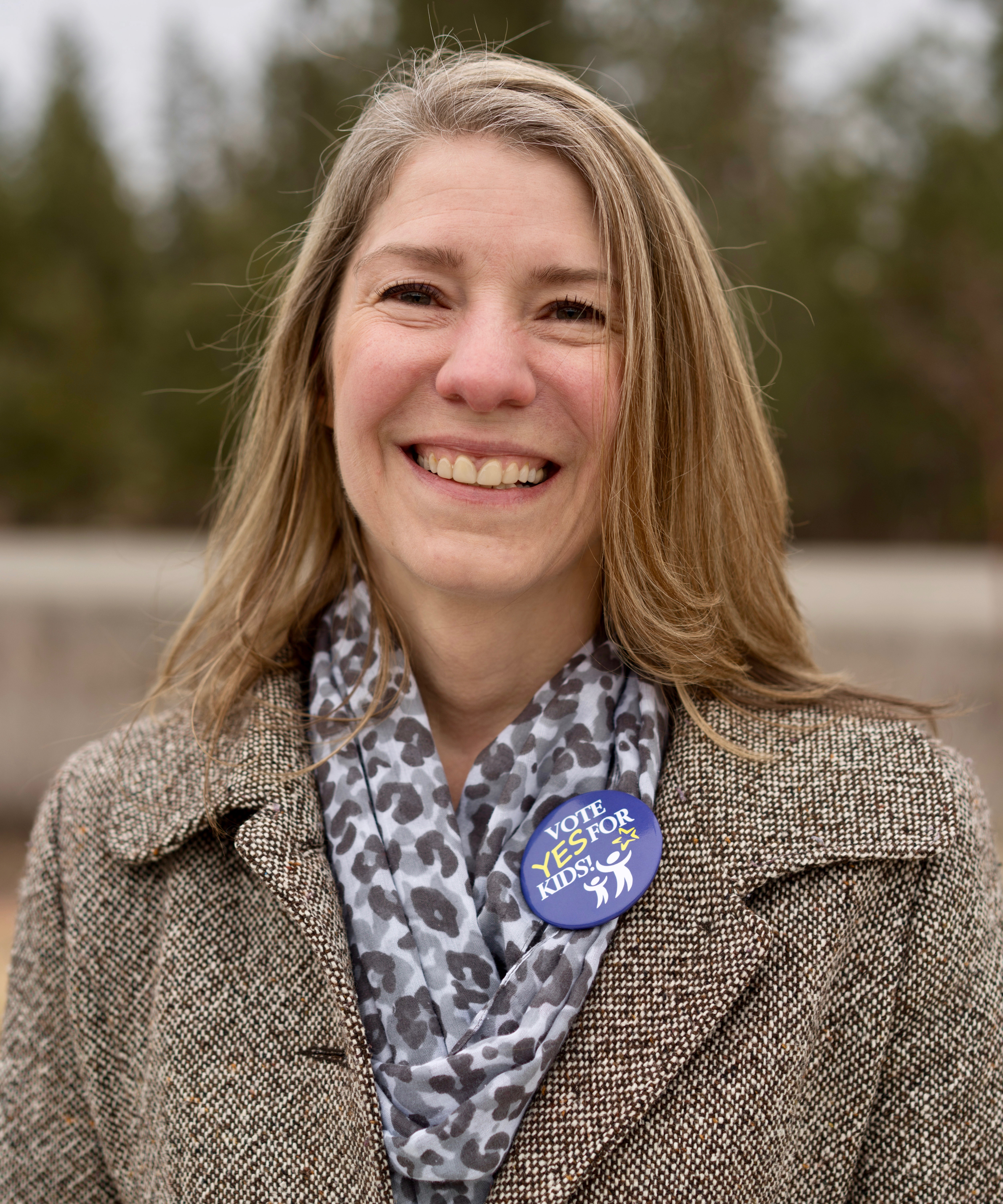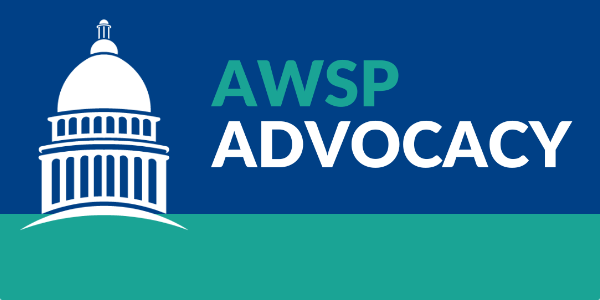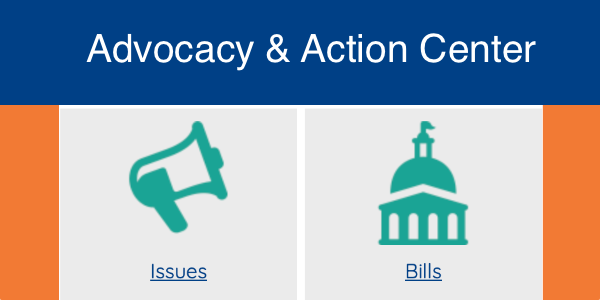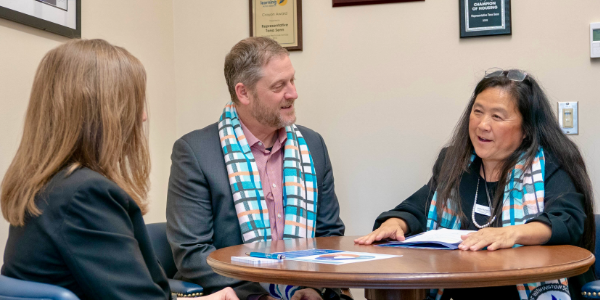Ol’ man river
That ol’ man river
He don’t say nothing
But he must know something
Cause he just keeps rolling
He keeps rolling along
~ William Warfield
The legislative river is running as close to 1,500 bills have been introduced since December’s prefiling. Included among those are a number of bills affecting pensions, health, and job benefits.
Hearings and any resulting action moving bills out of committees have begun as both houses move toward the first cut-off date.
This is a brief summary of bills of interest:
Retirement Related Proposals
SB 5400/HB 1390 would provide a 3% cost of living adjustment (COLA) to TRS1 and PERS1 members. These bills are Select Committee for Pension Policy (SCPP) agency request legislation. Both bills are awaiting scheduling before their respective fiscal committees.
SB 5360/HB 1308 Revise provisions in the public employees’ retirement system, the teachers’ retirement system, and the school employees’ retirement system with regard to plan membership default. It would change the present retirement plan default for new hires from Plan 3 to Plan 2.
SB 5360 is scheduled for a public hearing on 1/30 @3:30 before the Senate Ways and Means Committee.
HB 1308 is scheduled for a public hearing on 1/28 @ 3:30 before the House Appropriations Committee.
Adoption would result in a minimum savings of $31 million dollars in General Fund dollars, $35 million for local governments over 25 years (State Actuary figures).
SB 5414/HB 1409 Prohibits a contract year for employee benefits from exceeding two hundred sixty days, for K–12 employees. (An earlier draft of this bill (SB 5192/HB 1156) which had been introduced was incorrectly written.)
Currently, upon retirement, an individual can cash in his/her accumulated sick leave at a 1:4 ratio using a maximum of 180 days. This change would increase the maximum to 260 days reflecting the longer contract years many school employees, especially administrators work.
SB 5178/HB 1132 Concerns early retirement options for members of the teachers’ retirement system and school employees’ retirement system plans 2 and 3. It proposes changing the current option for early retirement at 62 years of age with no penalty to 60 years of age. Both bills are awaiting hearings.
Substitute Options for early Retirees
HB 1139 is a large bill relating to expanding the current and future educator workforce supply. A previous version of the bill passed the House last session but got no action in the Senate. This bill, by Representative Santos, is basically a re-introduction of the previous bill. Sections 304/305 state that educators that are members of Teachers’ Retirement System (TRS) Plans 2 or 3 that retired under the 2008 Early Retirement Factors are permitted to return to work before age 65 in any non-administrative position, not just in substitute teaching and instructional positions, and work for up to 867 hours per year without suspension of pension benefits. The ending date on the current provisions of August 1, 2020, as well as the separate section expiring the section of law, are removed, making the section effective indefinitely. A provision similar to the TRS provision is created for School Employees’ Retirement System, which is for classified school employees. It also removes the August 1, 2020 sunset date and the directive regarding substitute pay. It is scheduled for Executive Action on 1/31 before the House Education Committee.
SB 5430/HB 1388 allows retirees who retired under alternate early retirement factors enacted in chapter 491, Laws of 2007, to use post-retirement options prior to reaching age sixty-five. This is SCPP agency request legislation. It is similar to the above referenced bill but broader in that administrators are not excluded, bus drivers, para-pros, OT’s etc are included. It includes PERS retirees who have retired from positions with cities and counties for example. Smaller cities/counties need the expertise of their retiree for short durations and testified in support of this change. Both bills are awaiting hearings.
HB 1362 concerns benefits eligibility during post-retirement employment for members of the public employees‘, teachers’, and school employees’ retirement systems, plans 2 and 3. It is similar to SB 5430/HB 1388 above. This is likely to be ignored in favor of HB 1388 above.
SB 5350/HB 1413 authorizes the following, at the time of retirement, to purchase an optional actuarially equivalent life annuity benefit from:
- The public employees’ retirement system plan 1 fund;
- The public employees’ retirement system combined plan 2 and plan 3 fund;
- The public safety employees’ retirement system plan 2 fund; or
- The school employees’ retirement system combined plan 2 and 3 fund, as appropriate.
This bill was agency request legislation from the SCPP. SB 5350 is scheduled for a public hearing 1/30 @ 3:30 before the Senate Ways and Means Committee.
School Employee Benefit Board (SEEB)Health Related Proposals
As is customary, committees, during the first weeks of session, hold “Work Sessions” on various topics.
The Senate Ways and Means Committee held a work session on SEBB.
An overview of the SEBB program was given by the Health Care Authority. Following that, presentations were given by WEA (Shawn Lewis) that made a vivid case for why the provision of health benefits was important, humane, and largely a great deal more affordable for workers. An interesting point was made that this collective bargaining agreement was bargained between a coalition of affected employers and the state as a non-employer. (As an aside, this really sets an example for a process to negotiate a statewide master contract for all K–12 employees should that idea come to fruition.)
Kate Davis, CFO, from Highline School District presented the impact on her school district with the projected addition of 694 employees newly eligible. Estimated unfunded costs to Highline are $2.4 million in 2019–20 and $3.5 million in 2020–21. She pointed out that there were also expected yet unknown costs for a district for implementing this system/managing this project, changing IT practices/programs, and training of staff.
She presented recommendations including raising levy allowances to pay for the unfunded costs.
Tom Fleming, ESD 105, spoke as well. He did not have a power point but clearly pointed out the looming fiscal cost to districts. He laid out the impact of providing benefits for ECEAP and any fee based program where fees already are a challenge for those charged. In response to Chair Rolfes’ question that “Couldn’t school districts lessen the impact by changing staffing like hiring full-time substitutes?” (A very common remark from legislators who think district costs can be lessened). Fleming pointed out that only a few employee positions could be changed. Bus drivers, cooks, etc. can’t be combined into other than what they already are.
Important What staff and presenters made clear, however, was the unknown fiscal effect on districts once SEBB becomes operational. Sure, everyone knows there will be a cost but at least two legislators asked if projections have been done, and staff said no. The presenters even acknowledged that their figures were hypothetical given that no one yet knows the premium costs, for example. What is known is the projected cost to the state for funding formula staff is in excess of $900 million. The HCA authority had stated in previous SEBB meetings as estimate of $200-$300 million in excess costs to districts.
School districts need to be contacting their legislators if they have concerns over these impending costs and to educate them on SEBB.
The next day, the House Appropriations Committee had a work session where staff to the committee, Dave Pringle, reviewed the SEBB program. What was again apparent was the lack of knowledge of members, (many of whom are new to the committee), about SEBB, the costs, and how it would work. Mr. Pringle did point out that the projected general fund cost for 2019–21 would be $868 million, and $1.9 Billion over four years. Note his state cost projection differs from others. When asked about the effect on the fiscal side to school districts, Mr. Pringle stated that he had seen no credible information on the added costs to school districts so didn’t know. He suggested that there has been unclear methodology for estimating SEBB’s impact. (Once again, the credibility of school district supplied information is cast in doubt.)
Comment: Mr. Pringle rightly pointed out that little if any data exists and that figures being presented regarding projected enrollments, costs, impacts, etc. are hypotheticals since this is a new program.
Health Care
SB 5469/HB 1085 Concerns reducing the insurance premium for Medicare-eligible retiree participants in the public employees’ benefits board program. It requires the amount of a premium reduction for Medicare eligible retiree participants to be no less than fifty percent of the premium cost.
HB 1085 is scheduled for a public hearing 1/28 at 3:30 before the House Appropriations Committee.
Other Bills That May Have Fiscal/Hr Impacts For Districts
SB 5449/HB 1399 makes technical corrections requested by the Employment Security Department in the Family and Medical Leave Act passed last session. WASBO has been asked to review the bill to see if there are any concerns. A public hearing was held on SB 5449 on 1/24 and the bill is awaiting executive action by the committee. The bill report/narrative is available. HB 1399 was heard on 1/24 and is scheduled for Executive Action on 1/28.
SB 5513/HB 1515 concerns the employer-employee relationship by clarifying the difference between an independent contractor and an employee.
WASBO has been asked to review the bill for any concerns. A public hearing has been scheduled for 1/28 at 10:00 AM before the Senate Labor and Commerce Committee.
HB 1515 is scheduled for a public hearing 1/28 @ 1:30 before the House Labor and Workforce Standards Committee. It has been scheduled for Executive Session the following day, 1/29.
And finally……
SB 5486 concerning activities that exploit persons with dwarfism. Self-explanatory. The sponsor, Senator Padden said he became interested when a constituent contacted him about a dwarf-tossing contest in a local strip club. (I thought it was a proposal to ban broadcasting The Wizard of Oz is banned from broadcast.)
In short, we are current, active spectators riding the rapids and watching the currents.
Fred Yancey/ Mike Moran
The Nexus Group







